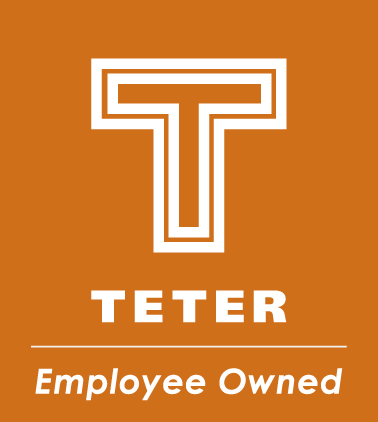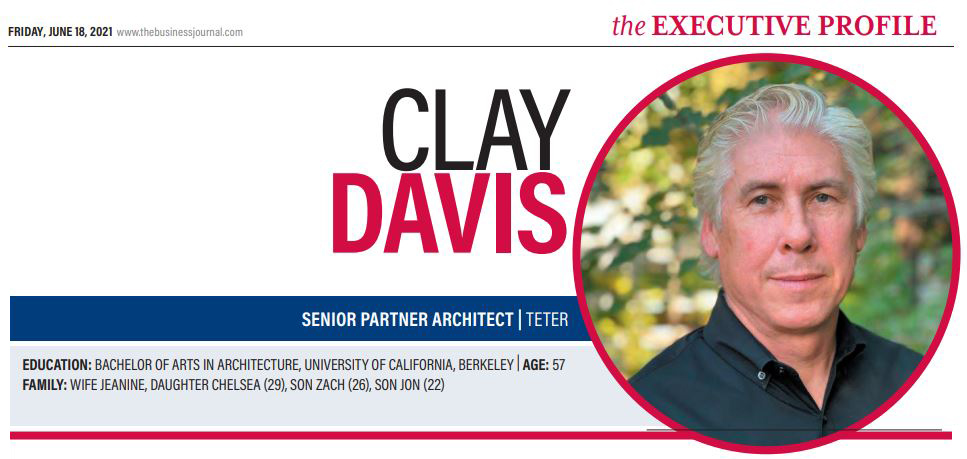Originally printed in the Business Journal on June 18, 2021
Tell us about your career before your current position at TETER.
I worked for a small architectural firm in Clovis my senior year of high school and during college. While there we designed the street improvements that make Old Town Clovis feel the way it does today (walkway pavers, planters, trellises, intersection monuments, building facelifts, etc.)
Upon graduation from Cal in 1986, I returned to Clovis and joined Vigen Associates and then a few years later a larger A&E (architecture and engineering) firm before joining TETER in 1997.
Can you tell us some of the quick history of TETER and the type of projects the firm specializes in?
TETER was founded by Glen Teter as a structural engineering firm in Visalia in 1979. In the mid-nineties architectural services were added as well as mechanical, electrical and plumbing engineering. I joined the firm in 1997 along with a few others to start the Fresno office, which would eventually become our headquarters and largest office. We now have a staff of over 130 in five offices.
TETER’s project types include K-12 and Higher Education facilities, Industrial, Medical, Food Processing, Commercial Offices, Mixed-use, Energy and Federal/Military.
What are your roots in the Central Valley?
My great-great-grandfather was one of Fresno’s earliest pioneers having moved here from the Midwest in 1848. He was actually a part of an expedition into Yosemite Valley in 1851 and one of the first non-indigenous Californians to explore the valley floor. We are now on our 7th generation in the Central Valley. Because of my deep roots, I have a keen interest in improving the quality of life for our communities through the built environment, hence TETER’s motto: “Building a Better Valley.”
What got you interested in architecture and engineering?
In grade school I can remember designing buildings with stacks of dominoes when most kids were lining them up in rows to knock them down. Early on my parents saw my interest in design and construction. When I wanted to build an incubator in middle school to hatch quail eggs, my dad first made me draw a set of plans. I remember being mad at the time because I just wanted to start sawing and hammering, but later I realized he was just trying to foster and encourage my interest in design and architecture by making me plan and draw things out on paper first. Apparently, it worked.
What are some of the current trends in architecture/design that are growing in popularity lately?
While I am loath to use the latest business buzzwords, I have to use this phrase since there’s no other simple way to describe it: biophilic design. Basically, biophilic design means increasing the connectivity of a building’s occupants to the natural environment either through
sight, sense of smell and/or sound.
Trends that have been emerging are buildings that incorporate landscape plantings on their roofs, exterior facades or interior walls. The idea is to reconnect the built environment to the natural environment – it’s an offshoot of the green/sustainable building movement. It’s thought that the connection to the natural environment improves mental health and sense of well-being. Even though this is a fairly recent popular trend, biophilic design has actually been around for centuries if not thousands of years, being commonly found in Greek and Roman architecture.
What effects did the Covid-19 pandemic have on your projects — timelines, labor and construction shortages, permitting issues, etc.?
The two biggest issues have been the time to obtain building permits as most plan review agencies have been working from home, and the high cost of building materials, in particular lumber. Timelines to obtain building permits in the Valley have essentially doubled or even tripled in some cases due to the lockdowns.
What’s the near future look like for TETER in terms of scheduled projects and interest from clients for future ones?
This year so far has been extremely active. The education sector is very busy as most school districts have received federal stimulus money and have a backlog of maintenance and capital improvement projects. The industrial and food manufacturing sectors have also dramatically picked up as the economy has improved. Projects that were put on hold in 2020 have restarted. The Federal Sector is improving thanks in large part to Federal stimulus funds.
What is one thing you have no patience for in the work place?
I actually have two: a lack of humility and a “lone wolf” attitude. The A&E/building industry has become so complex over the past 40 years between the various building codes, regulations, handicapped accessibility requirements, energy codes and approval processes, that anyone entering the profession out of college these days has to understand that they’ll be learning their entire career. They have to have the humility to accept that they’ll never know everything there is to know and be an expert at every aspect of their chosen profession. After 40 years I still learn something new almost every day. Because of this complexity, it takes an entire team of talented architectural and engineering professionals to put together a set of construction plans. Collaboration is key.
What was your first job and what was the most important thing you learned from it?
My first job was when I was 11 or 12 years old assisting my dad in his paving sealer business on 100-plus-degree Fresno summer days on hot black asphalt parking lots. I quickly realized there had to be an easier way to make a living and doubled down on my studies.
What do you like to do on your free time?
Salt water fishing, hiking, shooting sports, home improvements.


